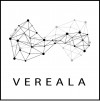
The Nanotechnology Industries Association (NIA) cautiously welcomes the European Commission’s proposal to review its 2011 nanomaterial definition, which it has committed to do as part of the recently published EU Chemicals Strategy for Sustainability Towards a Toxic-Free Environment. An update on the nanomaterial definition has been expected for several years and past attendees at the NIA Annual Symposium may remember that this has been a feature of past presentations in talks given by Commission Staff.
The current definition defines a nanomaterial as:
A natural, incidental or manufactured material containing particles, in an unbound state or as an aggregate or as an agglomerate and where, for 50 % or more of the particles in the number size distribution, one or more external dimensions is in the size range 1 nm - 100 nm.
In specific cases and where warranted by concerns for the environment, health, safety or competitiveness the number size distribution threshold of 50 % may be replaced by a threshold between 1 and 50 %.
By derogation from the above, fullerenes, graphene flakes and single wall carbon nanotubes with one or more external dimensions below 1 nm should be considered as nanomaterials.
The EU’s Joint Research Centre has produced three reports, including recommendations for changing the definition (see especially) which give some ideas about the scope of the changes of the proposed revision. It is also understood that any proposed revision would not result in major alterations, but would allow the definition to be updated to reflect recent scientific developments. Possibly as crucial as the definition itself, is how this would be used across different legislation and ensuring that all EU legislation uses the same definition.
In the EU different legal acts contain specific definitions for nanomaterials such as Medical Devices, Cosmetics, Biocides and Food, and, interestingly, whereas the Commission recommendation is non-binding, product-specific regulations are legally binding and directly applicable in the EU.
One main aim of the nanomaterial’s definition is to be able to provide a legal framework to protect human health and the environment. However, the nanomaterial’s definition must be implementable and currently several terms like “particle”, “constituent particle” or “external dimension” need to be better defined or introduced in the definition. Likewise, and in spite of the several advances in detection techniques, the 50% by number threshold still encounters limitations regarding analytical tools, with serious challenges associated with detection limits for the smaller end of the range. Vague terminology in the definition could hamper further development of analytical techniques, imply unnecessary extra costs for developers, or lead to inadequate classification of materials, in which case the regulatory framework will fail in its purpose to protect human health and environment. A clear definition will also help in the development of appropriate standards.
It is understood that the European Commission will be launching a consultation on the revised definition by the end of 2020, but a final timeline has not been published. NIA will be consulting with its members to gather their opinions and ensure that it is prepared for the Commission’s consultation exercise when it starts.
NIA’s Director of Regulatory Affairs, Dr Blanca Suarez Merino commented "NIA has indeed been asking for a number of years for clarification on the use of the nanomaterial definition across regulatory frameworks and it is great to see that reflected in the strategy. We look forward to hearing more of the Commission’s plans and welcome the opportunity to respond in due course on behalf of our members.”



















